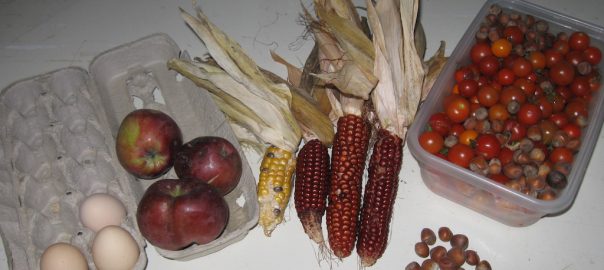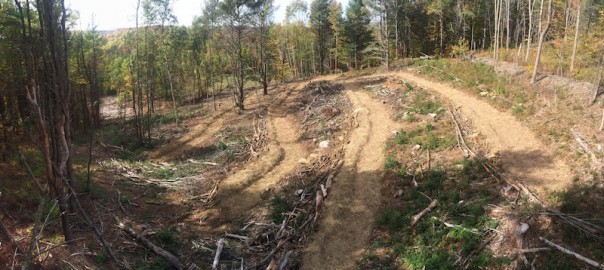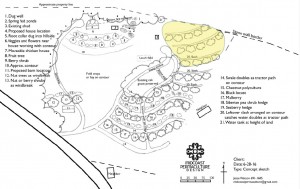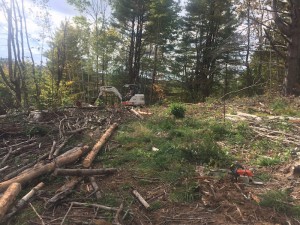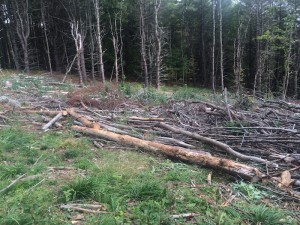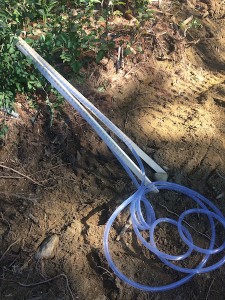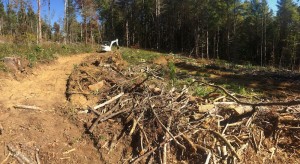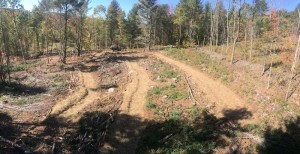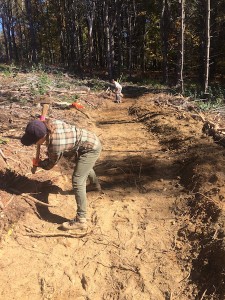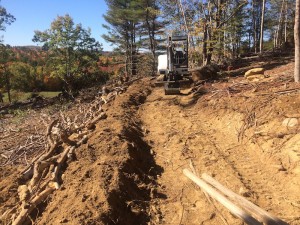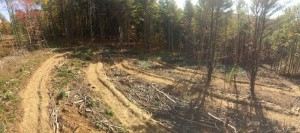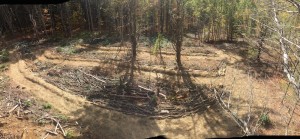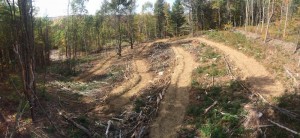By Nathan Davis and Jesse Labbe-Watson | Dec 01, 2016 Original link
This question is at the core of the movement for food sovereignty in Maine and around the world. Food sovereignty is the assertion of local control over our food system, and the assertion against control by big agribusiness and nonlocal corporate interests. Eighteen municipalities in Maine have passed food sovereignty ordinances, and food sovereignty is now before the Rockland City Council. Rockland would be the largest community in Maine to pass a food sovereignty ordinance, and the first city to do so. We strongly support food sovereignty, and we think that the proposed food sovereignty ordinance deserves the Council’s support.
The movement for food sovereignty in Maine began in 2009, when Heather Retberg at Quill’s End Farm in Penobscot wanted to sell raw milk directly to her neighbors. She became frustrated when state regulators required her to obtain a permit that would have demanded expensive investment far beyond what her small-scale sales could justify. It seemed ludicrous that regulations created for and by the factory farm industry would be applied to neighbor-to-neighbor transactions. So Heather and other like-minded farmers and consumers drafted what became the first food sovereignty ordinance in the state. This ordinance has become a model for ordinances in communities throughout Maine, including the one before our City Council.
The preamble to the ordinance begins as follows: “We the People of Rockland, Knox County, Maine have the right to grow, produce, process, sell, purchase and consume local foods thus promoting self-reliance, the preservation of our local food economy, family farms, and local food traditions.” It then continues with philosophical and legal justification (drawing upon the Maine Constitution and Maine Revised Statutes) before arriving at the core statements of law: “Producers or processors of local foods in the City of Rockland are exempt from licensure and inspection provided that the transaction is only between the producer or processor and a patron when the food is sold for home consumption”; and “Producers or processors of local foods in the City of Rockland are exempt from licensure and inspection provided that their products are prepared for, consumed, or sold at a community social event.” The ordinance thus covers only transactions in which there is little or no separation between producer and consumer. It applies to neither third-party distributors, grocery stores, nor restaurants. It relies on – and strengthens – the feedback loops and bonds of community that nourish local business and form the fabric of traditional Maine life.
Food sovereignty supports economic development, environmental sustainability, community resilience, food security, local control, and individual liberty:
- It combats control of our food and our government by large unaccountable corporations. It’s no secret that big agribusiness drives government food policy. As President Obama stated in a recent interview, “For a long time, agribusiness has had obviously a prominent seat at the table in Congress. It’s bipartisan.” Food sovereignty aims to remove regulatory burdens appropriate to large industrial-scale food production from small farms and producers (and ONLY from small farms and producers).
- Huge monoculture farms produce well-documented negative environmental effects. Food sovereignty encourages diverse, small crops rather than uniform, large ones. It promotes active and careful stewardship of our farmland and natural resources by encouraging tight feedback loops between patrons and farmers.
- Localized food systems are resilient against economic, environmental, and other stressors. We don’t know what our climate, economy, or society will look like in 20 or 50 years, and we should build systems and structures (not just related to food) that will lead to prosperity in a variety of futures, some of which may involve the weakening of national and global supply lines.
- A food sovereignty ordinance in Rockland would reinforce our position as a leader in local food culture, which attracts visitors, new residents, and investment to our community.
- Food sovereignty preserves Maine’s traditional food heritage and folkways, which are among the reasons that Maine is a great place to live.
- Food sovereignty guarantees in local law the right for people to choose where they obtain their food and how that food is produced. If you want to get your food from a big store, you can do that. If you want to support a young farmer in the startup phase of their business, you are free to do that as well. A food sovereignty ordinance reduces the capital-intensive barriers to entry that many small farmers struggle with and also codifies the right of farmers to be able to sell directly to patrons who willingly support them.
- Local law is the next frontier and most powerful current tool for protecting a sustainable agriculture system made resilient by diversified small-scale producers exercising their own right to self-determination.
- This ordinance supports local businesses in the growing agricultural sector of Maine’s economy. By extension, it supports all local businesses, because if people can’t eat nourishing food, they can’t work or live here.
You may have heard of the “Farmer Brown” case decided by the Maine Supreme Court in 2014 against a seller of raw milk in Blue Hill. Contrary to some accounts, the Court did NOT strike down the food sovereignty ordinance in Blue Hill, nor did it strike down any food sovereignty ordinance elsewhere. Rockland would not contravene the Court’s decision by passing this ordinance. Government regulations around food safety arose in the early 1900s in response to centralized industrial meatpacking plants and have never been designed for small-scale direct farm-to-patron sales. The original motivation for food safety regulations like the Federal Meat Inspection Act of 1907 was for government to provide oversight in situations where the consumer could not do that for themselves. A food sovereignty ordinance clarifies where government oversight is needed and where it isn’t. Under this ordinance, direct patrons of local farms would essentially regulate how farms produce food by taking their business to farms they trust in a true free market.
Food is one of the most immediate and intimate aspects of human life. Let’s celebrate that immediacy rather than ceding it to structures and systems built to mitigate the worst aspects of the industrial food systems of the past. Small farms drive Maine’s economy and attract young people to our state, and their numbers are increasing. Let’s keep it that way.
Nathan Davis and Jesse Labbe-Watson both live in Rockland. Davis is a co-founder of Renew Rockland, which has proposed a food sovereignty ordinance for the city. Labbe-Watson is the founder of Midcoast Permaculture, current board president of the Permaculture Association of the Northeast, and an expert in designing and building regenerative food systems for home and farm clients.

